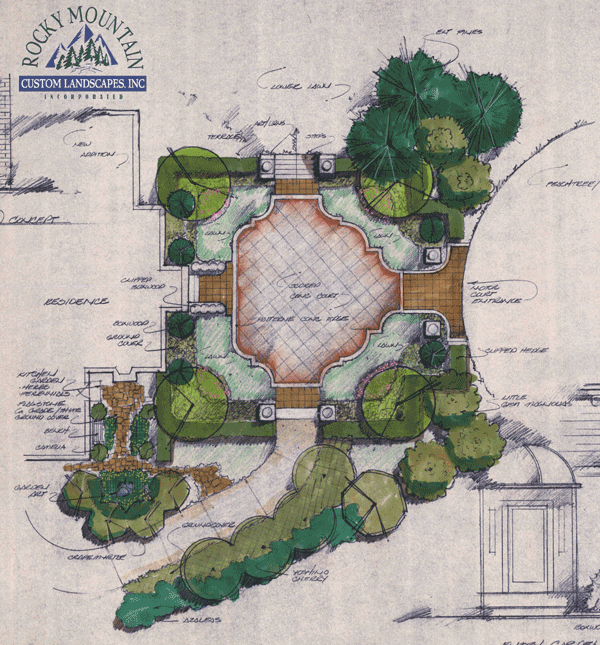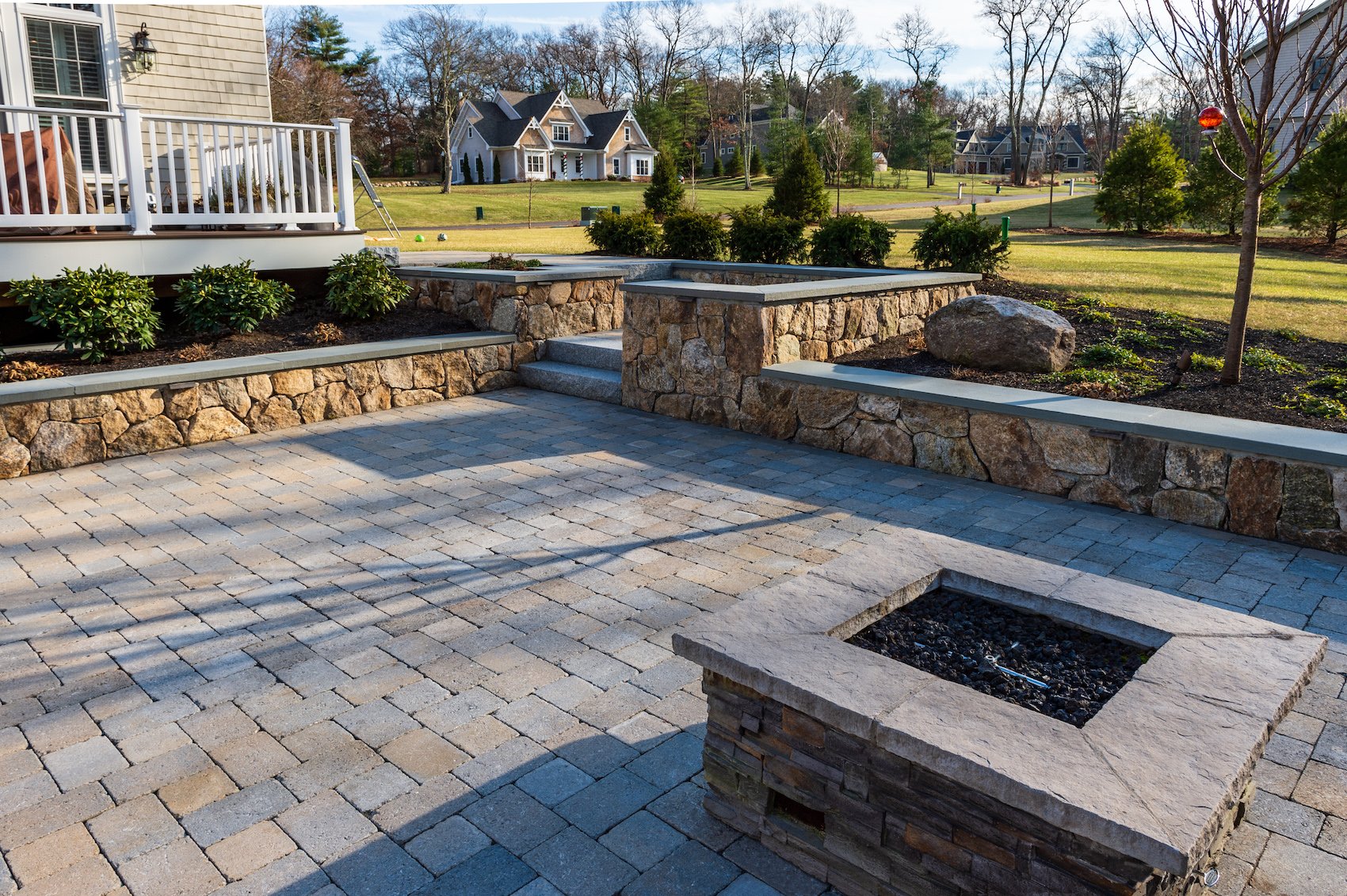Introducing Outside Beauty: Ogden Edge Design Company Signature Landscapes
Introducing Outside Beauty: Ogden Edge Design Company Signature Landscapes
Blog Article
Changing Your Landscape With Lasting Layout
By integrating green design elements, choosing indigenous plants, and executing water preservation methods, one can develop a greener and more lasting landscape. In this conversation, we will check out the various benefits of lasting landscape design, dive right into the means to incorporate green layout components, and share pointers and tricks for keeping a lasting garden. If you're looking to transform your landscape right into a sustainable sanctuary, maintain reviewing to find the tricks to attaining a greener and a lot more ecologically friendly outside area.
Benefits of Lasting Landscaping
Lasting landscaping supplies many benefits for both the atmosphere and residential property proprietors. By incorporating drought-tolerant plants and efficient watering systems, sustainable landscape design lowers water usage significantly.
Another benefit of lasting landscape design is the decrease of chemical use. Standard landscape design frequently relies upon pesticides and fertilizers, which can harm the environment and human wellness. On the other hand, lasting landscape design techniques prioritize all-natural insect control approaches and organic plant foods, minimizing the need for dangerous chemicals.

Last but not least, sustainable landscape design can increase residential property value. A well-designed sustainable landscape not just boosts the visual charm of a residential or commercial property but likewise shows a commitment to environmental responsibility. This can attract possible customers and renters that value sustainable practices, bring about greater building need and value.
Incorporating Eco-Friendly Style Elements
By integrating environmentally friendly layout elements, residential or commercial property proprietors can boost the sustainability of their landscapes while minimizing their ecological effect. Eco-friendly layout aspects concentrate on using sources efficiently, minimizing waste, and promoting biodiversity. One crucial aspect is water preservation. Installing rainwater harvesting systems and utilizing drip irrigation can substantially decrease water usage. Native plants ought to additionally be focused on in landscape layout, as they are adjusted to the neighborhood environment and require much less water and maintenance. Furthermore, integrating lasting products is crucial. Using recycled or reclaimed materials for hardscaping not only decreases waste yet also adds a special aesthetic to the landscape. An additional essential component is power effectiveness. Setting up solar-powered illumination or utilizing low-energy LED lights can reduce energy usage. Lastly, developing environment for wildlife is a vital environmentally friendly layout component. By including attributes such as bird feeders, insect resorts, and native growings, homeowner can attract and sustain a diverse range of wild animals. Integrating these eco-friendly layout aspects not just benefits the environment yet also develops a attractive and lasting landscape for residential property owners to enjoy.
Picking Indigenous Plants for a Lasting Garden
When creating a lasting garden, one important facet to consider is the choice of indigenous plants. Native plants are those that naturally happen in a details area or community and have adjusted to the neighborhood environment, soil problems, and wildlife. By choosing indigenous plants for your garden, you can produce a low-maintenance and lasting landscape that benefits both the environment and the regional environment.
Indigenous plants have actually evolved in time to be appropriate to the regional visit the site conditions, making them a lot more durable and much less depending on chemicals, plant foods, and too much watering. They additionally give environment and food resources for neighborhood wild animals, such as birds, butterflies, and , which are necessary for pollination and biodiversity.
When picking indigenous plants for your yard, it is vital to take into consideration variables such as sunshine needs, dirt kind, and water needs. Investigating and consulting with neighborhood baby rooms or horticulture professionals can assist you determine the native plants that are best suited for your details area.
In enhancement to their ecological benefits, native plants can additionally include charm and diversity to your yard. They can be found in a variety of sizes, shades, and forms, permitting you to develop a aesthetically attractive and distinct landscape.
Water Preservation Strategies for a Greener Landscape
To create a more environmentally-friendly and sustainable yard, applying water conservation techniques is crucial for a greener landscape. Water is a priceless resource, and as our populace grows and environment modification magnifies, it comes to be progressively important to save water in our landscapes.
One effective water conservation strategy is utilizing compost. Applying a layer of compost around plants and in yard beds assists to preserve moisture in the dirt, reducing the requirement for frequent watering. Mulch additionally helps to reduce weed development, which can contend with plants for water.
An additional technique is making use of drip irrigation systems. Unlike standard sprinkler systems that spray water right into the air, drip irrigation provides water directly to the roots of plants, lessening dissipation and water waste. Drip watering systems can be conveniently installed and changed to fulfill the specific water requirements of various plants.
Rainwater harvesting is one more useful strategy for water conservation. By gathering rain from roof coverings, gutters, and downspouts, you can save it in barrels or tanks for later use in watering your Recommended Reading garden. This not only decreases the demand for community water however additionally makes certain that rain, a free and natural resource, is put to great usage.
Last but not least, proper maintenance of irrigation systems is essential for water conservation (Ogden Edge Design Company). Consistently inspecting and fixing any kind of leakages or busted lawn sprinkler heads can stop water loss and make certain that water is being made use of successfully
Preserving a Lasting Yard: Idea
Implementing appropriate maintenance methods is necessary for keeping a lasting yard. By following a few tips and tricks, you can guarantee that your garden remains healthy, dynamic, and ecologically friendly.
One of the most important aspects of maintaining a lasting garden is proper watering. By watering your plants deeply and much less regularly, you can urge deep origin development and minimize water waste. Furthermore, utilizing a drip irrigation system or rainwater harvesting can further conserve water sources.
Normal weeding is an additional critical upkeep technique. Weeds complete with your plants for nutrients and water, so it is essential to eliminate them immediately. Think about using natural compost to reduce weed growth and keep moisture in the soil.
Composting is a superb method to reuse natural waste and improve your yard dirt. By producing a garden compost heap, you can transform cooking area scraps, yard trimmings, and other organic materials into nutrient-rich garden compost. This will certainly not just minimize waste however also boost soil wellness and fertility.

Normal pruning and correct plant care are additionally essential for preserving a sustainable yard. Pruning assists promote healthy and balanced growth, boost air circulation, and prevent the spread of illness. Additionally, giving ample sunlight, dirt nutrients, and protection from extreme climate condition will assist your plants thrive.
Final Thought
To conclude, sustainable style in landscape design provides many benefits, such as saving natural deposits, reducing contamination, and developing a healthier atmosphere. By including environmentally friendly layout elements and selecting indigenous plants, people can create a sustainable yard that sustains local biodiversity and needs much less upkeep. Executing water conservation methods better contributes to a greener landscape. Generally, keeping a sustainable garden needs mindful planning and continuous dedication, however the rewards are well worth the initiative.
By integrating environment-friendly style aspects, selecting native plants, and executing water conservation methods, one can produce a greener and a lot more sustainable landscape. In this discussion, we will discover the numerous benefits of sustainable landscape design, dive right into the methods to incorporate eco-friendly design components, and share pointers and methods for preserving a sustainable garden. By including drought-tolerant plants and reliable irrigation more tips here systems, lasting landscaping reduces water use significantly. By picking native plants for your garden, you can develop a sustainable and low-maintenance landscape that profits both the atmosphere and the local ecological community.
By including environment-friendly style elements and picking indigenous plants, individuals can create a lasting garden that sustains neighborhood biodiversity and needs less upkeep.
Report this page